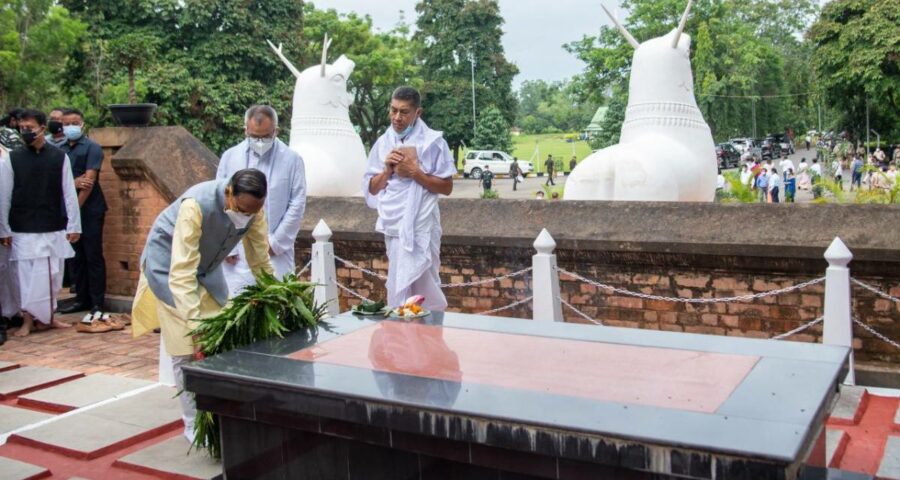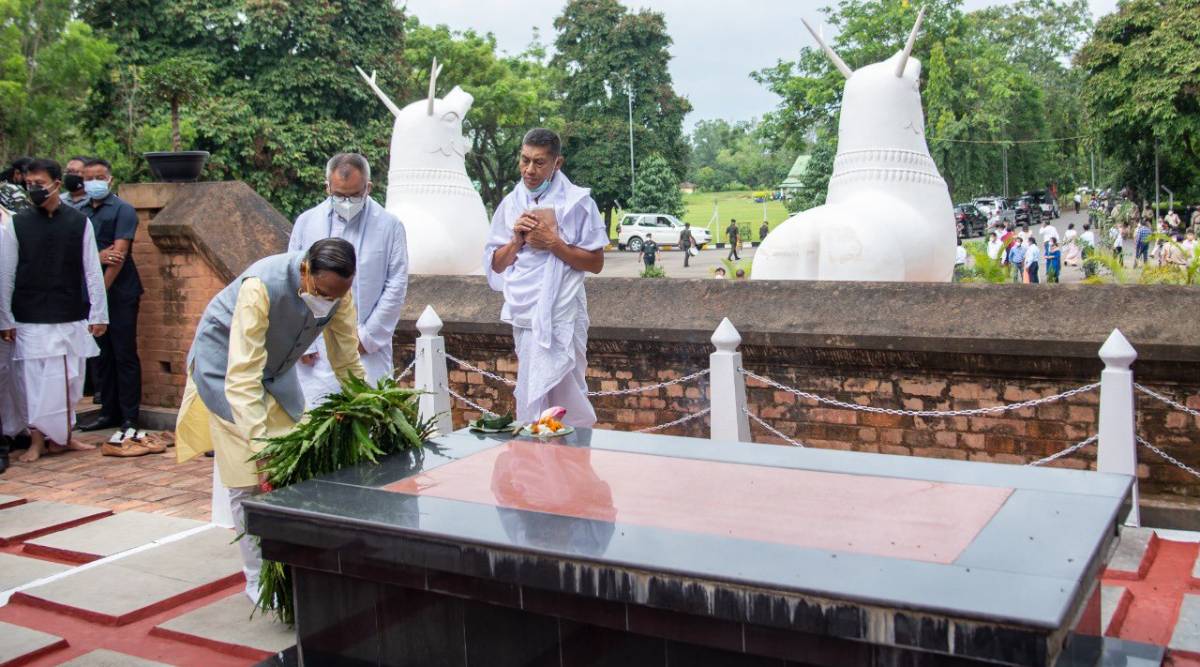As many as 21 names, including Maharaja Kulachandra, have been engraved on the monolith
The Manipur government Friday unveiled a monolith dedicated to the unsung heroes of the Anglo-Manipur war in 1891, whose whereabouts remained unknown after they were sent to exile at Kalapani during British rule.
The monolith was inaugurated by Manipur Governor designate Ganga Prasad on the occasion of Partriot’s Day of Manipur. As many as 21 names, including Maharaja Kulachandra, have been engraved on the monolith.
The monolith has been constructed alongside “Sahid Minar”, also known as the Martyr’s Memorial, erected as a symbol of sacrifice in honour of the Anglo-Manipuri war heroes.
On August 13, 1891, at this very park, Manipur prince Bir Tikendrajit and General Thangal, were hanged publicly for waging a war against the British empire while others were sent to exile at Kalapani.
Manipur Chief Minister N Biren Singh said the memorial complex is a tribute to all those who were exiled to Andaman and Nicobar Islands after the Anglo-Manipur war of 1891.
“We must not forget the exiled martyrs who made supreme sacrifices for the sovereignty of our motherland. This day reminds us of the courage and selfless sacrifices made by our forefathers who fought the mighty British forces despite knowing that they would be defeated,” he said.
Ng Uttam Singh, director Arts and Culture, said the names engraved on the monolith was based on records found in the Manipur Archives.
“As per the records available, we found names of 22 persons who were sent to exile by the British. Initially names of only 21 were engraved as we came to know that the exile order of one of them was cancelled,” said Uttam.
The director, however, informed that there is room for names on the monolith in case lost records are found.
Till date, it remains unclear as to how many Manipuris were exiled to Kalapani’s Cellular Jail. Some reports suggest that 16 persons were exiled to the islands after Manipur was defeated while various sources indicate there were altogether 23 people exiled at Kalapani in different batches and at different points of time.
Another report suggests that freedom fighters imprisoned at the Cellular Jail during the period of 1901-1938 were 513 in number. The data is based on the wall inscriptions of the jail and divided into three phases – the First Phase (1909-1921), Second Phase (1922-1931), and Third Phase (1932-1938).
Source: Read Full Article


